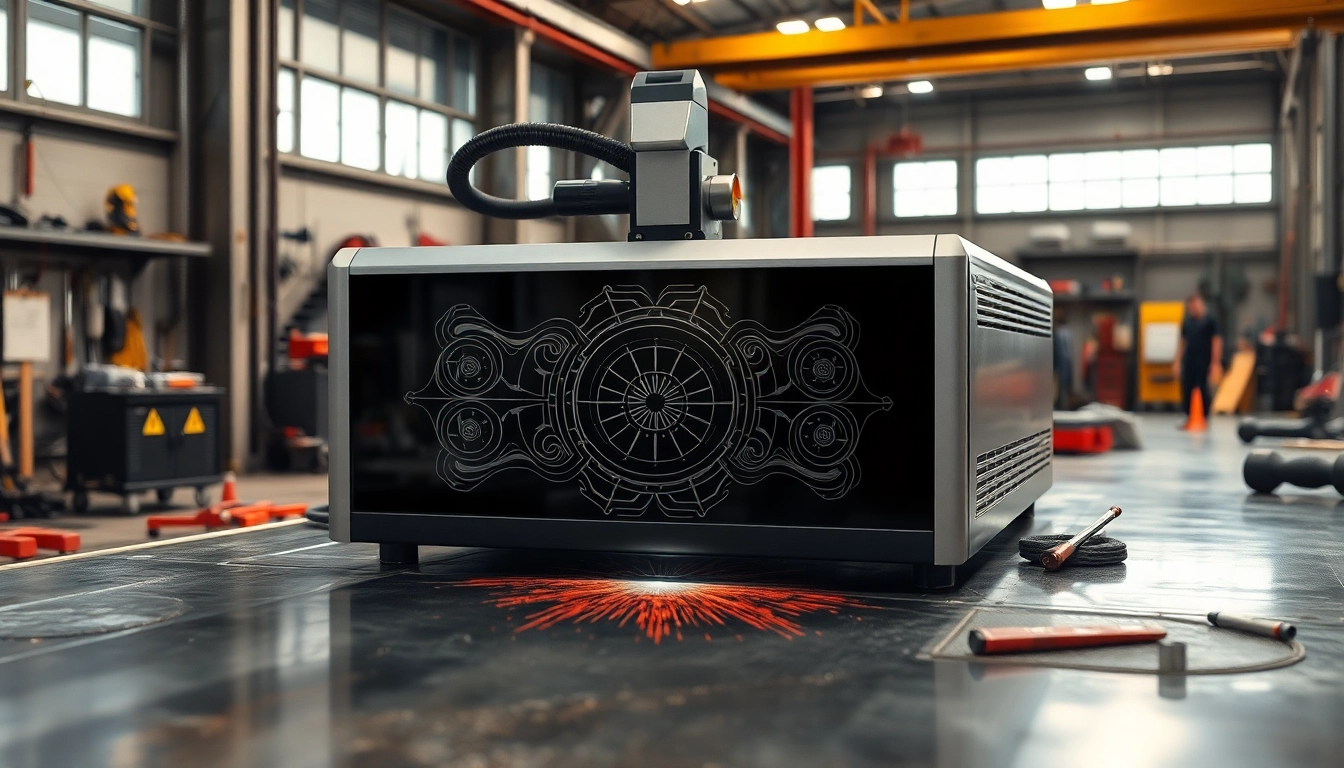1. Understanding the Ac DC Tig Welder
The world of welding offers a diverse array of techniques and equipment, but few are as versatile as the ac dc tig welder. Designed to accommodate both alternating current (AC) and direct current (DC), these welders serve a wide range of applications, making them a favorite among professionals and hobbyists alike. This section delves into the fundamentals of AC/DC TIG welding technology, its advantages over other welding methods, and various applications where it proves most beneficial.
1.1 How Ac DC Technology Works
AC/DC TIG welders utilize two types of electrical currents to produce heat for welding: alternating current and direct current. The essence of their functionality lies in the type of current used, impacting the quality of the weld and the types of materials that can be joined.
In AC mode, the current alternates direction, typically at a frequency of 60 Hz. This feature is particularly useful for welding non-ferrous materials such as aluminum and magnesium, as the alternating current helps to clean the oxide layer from the surface of these metals, achieving a better weld. On the other hand, DC mode provides a more stable arc and smoother performance when welding ferrous materials such as steel and stainless steel. As a result, welders can switch between AC and DC based on the specific material and weld being performed, showcasing the incredible versatility of AC/DC TIG welders.
1.2 Benefits of Ac DC Compared to Other Welders
AC/DC TIG welders offer numerous advantages compared to their MIG and Stick counterparts. One of the primary benefits is the high level of control they provide to the welder. TIG welding is renowned for its precision, enabling welders to make fine adjustments to heat and control the weld pool effectively.
Another advantage is the ability to weld a broad range of materials. While MIG welding is excellent for thick materials and rapid welding tasks, AC/DC TIG welders can weld thin sheets and delicate components without warping or affecting their structural integrity. This makes them ideal for applications requiring careful workmanship, such as aerospace and automotive industries.
Lastly, AC/DC TIG welding produces clean and aesthetically pleasing welds with minimal spatter. This goes a long way in reducing post-weld cleanup and providing a finished look that is often necessary in visible weld applications.
1.3 Applications for Ac DC Tig Welding
AC/DC TIG welding is utilized in various industries and applications. Its versatility stands out particularly in:
- Aerospace Engineering: Precision is critical in this field, making AC/DC TIG welders suitable for joining lightweight metals like magnesium and aluminum.
- Automotive Repair: Custom exhaust systems, frames, and bodywork often require TIG welding for clean and durable joints.
- Artistic Metalwork: Artists and fabricators appreciate the finesse that TIG provides for creating intricate designs and sculptures.
- Manufacturing: AC/DC welders excel in manufacturing environments where a variety of materials must be welded quickly yet precisely.
2. Key Features to Look For in an Ac DC Tig Welder
Shopping for an AC/DC TIG welder involves examining several critical features that can affect both performance and user experience. Whether you’re a seasoned professional or a beginner, understanding these features is vital.
2.1 Power Settings and Adjustability
A quality AC/DC TIG welder should offer a range of power settings. Different materials and thicknesses require specific amperage for optimal weld quality. The ability to adjust the current allows the welder to tailor their technique to the task at hand. Many models also offer pulse features, which can enhance control over heat input and improve the weld quality, particularly in thin materials.
2.2 Build Quality and Durability
The life expectancy of your welder largely depends on its build quality. Look for units made from high-grade materials and those with protective features, such as fans for cooling and robust cases that guard against damage. Durability is essential, especially if you plan to work in demanding environments.
2.3 Portability and Size Considerations
For many welders, mobility is a priority. If you’re working on-site or moving between shops, a lightweight and portable welder will save time and effort. However, don’t sacrifice features for portability; ensure the machine still has enough power and functions to meet your needs.
3. Top Brands Offering Ac DC Tig Welders
Numerous brands manufacture AC/DC TIG welders, each with its own strengths and weaknesses. Below are some of the top names in the industry, known for their innovation, build quality, and customer satisfaction.
3.1 Everlast: A Leader in Innovation
Everlast is widely recognized for its approach to modern welding solutions. Their AC/DC TIG welders incorporate effective technologies that cater to both novice and seasoned welders. With various models available, Everlast offers options tailored to specific needs, including those suited for aluminum welding and intricate projects.
3.2 Miller Electric: Reliability and Performance
Miller Electric is synonymous with quality in the welding industry. Their AC/DC TIG welders are known for their robust performance and reliability. They also provide excellent customer support and a wealth of resources for users, making them a popular choice among professionals.
3.3 PrimeWeld: Budget-Friendly Options
PrimeWeld delivers high-quality AC/DC TIG welders that often come at competitive prices. They offer great entry-level options without compromising on essential features, making their products appealing for newcomers to welding as well as those looking for dependable budget solutions.
4. Tips for Using Your Ac DC Tig Welder Effectively
Maximizing the effectiveness of your AC/DC TIG welder requires proper setup, maintenance, and technique. Here are tips to ensure you get the most from your equipment.
4.1 Setting Up Your Workspace for Success
Having a well-organized workspace is pivotal for successful welding. Ensure adequate lighting and ventilation, as well as accessibility to all tools and materials. Use a stable workbench and ensure gentle grounding to protect against electric shocks. Additionally, keep your equipment and supplies organized for efficiency.
4.2 Maintenance Tips for Longevity
Regular maintenance will extend the life of your AC/DC TIG welder. Clean the machine regularly and ensure the torch is free from excessive wear and tear. Check cables and connections for fraying and replace consumables like tungsten electrodes timely. Keeping the welder in excellent condition will help it perform optimally for years.
4.3 Common Mistakes to Avoid
Even experienced welders can make mistakes. Some common pitfalls include:
- Using the wrong amperage settings for the material thickness
- Incorrect tungsten electrode preparation or selection
- Insufficient shielding gas flow leading to contamination of the weld
Being mindful of these factors will contribute to superior weld quality and effectiveness.
5. Comparing Popular Ac DC Tig Welders on the Market
The choice of which AC/DC TIG welder to purchase can be overwhelming given the variety of models available. This section will compare several popular options based on features, pricing, and user feedback.
5.1 Feature Comparison of Leading Models
Comparison shopping is essential for identifying the best machine for your needs. Consider factors such as:
- Output Power: Higher amperage capabilities mean you can weld thicker materials.
- Pulsing Options: Many higher-end models offer pulsing features, which help with heat control.
- Control Panel User-Friendliness: The layout and nomenclature of dials and controls directly influence ease of use.
5.2 Pricing Analysis and Value Considerations
Price points for AC/DC TIG welders can vary significantly depending on brand, features, and capabilities. It’s essential to evaluate whether the higher-end features are worth the investment based on your specific welding applications. Budget-friendly welders may lack certain advanced features but can still deliver satisfactory performance for casual use.
5.3 Customer Reviews and Feedback Insights
Looking through customer reviews can offer invaluable insights into how well a model performs in the real world. Pay attention to positives such as build quality, customer service experiences, and how users found the machine’s capabilities. Common complaints can also alert you to potential drawbacks worth considering.



